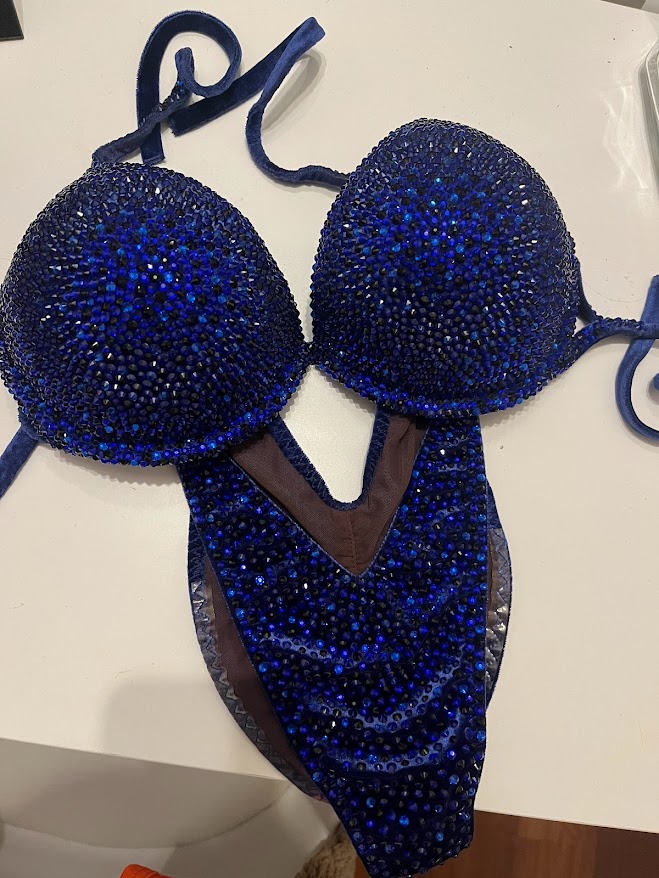The downsides of fitness
The first thing we would like to highlight is that many of the following issues we discuss are based on the athletes’ own experiences and some of the information is referenced. Everyone experiences the sport in their own way and everyone will certainly have their own challenges in the sport, if any. However, it is important to remember that there are not always downsides! We just want to highlight any potential downsides that you should be aware of when you are starting out in the sport.
In the off-season I have not experienced anything negative and everything went as planned. The biggest problem in the off-season was mainly how to eat all the food I was supposed to 😀 I haven’t experienced the downside of the competition diet yet, as it’s only been 5 weeks since my first competition diet. So far everything has gone well and the weight has started to come down steadily. The first two weeks I felt more hungry, as my body was not yet used to minus calories. But now things have leveled out and I’m not hungry anymore. The calories have only dropped by 300 calories on training days compared to the off-season, so it’s not a big change yet. On rest days, calories have been reduced by 600 calories.
The sport puts you at risk of developing an eating disorder, because looks and food play such a big role in the sport. This is why it is important to have the right starting point when taking up the sport! The risk of eating disorders is also high in other sports such as gymnastics. I know of several girls through gymnastics who developed anorexia or other eating disorders while doing gymnastics. Factors that may predispose an athlete to eating disorder syndrome include the pursuit of perfection, body image pressures and the pressures placed on the athlete by the coach (Juntunen, 2019, p. 13). In sports where the goal is a lean body, it has been found that there are more traits of disordered eating behaviour than in sports where body fat percentage does not matter (Juntunen, 2019, p. 14). Fitness is, of course, one of the sports where the goal is a lean body.
Especially for women, competition diets can have negative effects on endocrine function. I’ve heard of people who have lost their periods completely at the end of the diet, but then come back when their weight returns to normal. In addition to endocrine disruption and the risk of developing an eating disorder, I’m sure everyone on a diet experiences fatigue to a greater or lesser extent. Fatigue leads to low energy levels and a lack of energy to do everything in the same way as before. For example, you may have to skip some parties and your social life may be reduced. The focus is only on diet, training and competitions. However, this is all temporary and it is not healthy to maintain competition fitness for long, nor is competition fitness something you should dream of or think about achieving in any other way. The progress of the diet and post-diet recovery will be overseen by a professional coach.
Often the diet itself is easier for many people than the reverse diet after a competition diet. Reverse dieting is about starting to recover from the competition season, and taking it easy to start bringing calories back to everyone’s own normal. So it’s only when you reverse diet that problems can arise, as your fitness condition “softens” and your own eye gets used to the tighter fitness condition. At this stage, the support and know-how of the coach is particularly important. A Finnish study has found that the female athlete’s body recovers from competition in about 3-4 months. The study also reported that athletes’ weight and all hormones except T3 and testosterone returned to normal after 3-4 months (Hulmi et al., 2016).
Most of the negatives are health-related, but there is also a fairly high level of spending throughout the year, as we understood from previous interviews. It is not possible to practice the sport if you do not have enough money, as the training fees alone cost at least €150/month. The most expensive single purchase for myself at the moment is definitely the competition bikini, which cost €495. Below is also a picture of the bikinis in question.

A physiotherapist can help fitness athletes in the same way as athletes in other sports with potential sports injuries. Physiotherapists also have a role to play in the treatment of patients with eating disorders. The physiotherapist examines the functional capacity of patients with eating disorders. This includes testing joint mobility, strength and endurance, measuring weight, measuring heart rate and heart rate rise during exercise, and monitoring gait, balance and body control (Eating disorders: Current treatment recommendation 2014). The physiotherapist can do a range of exercises to focus on the body in a positive way and try to block out any negative thoughts. Mindfulness training is one way to help the patient. (Kumlin & Väntti, 2015, p. 17) However, a physiotherapist is not the first health professional to go to when suffering from an eating disorder. Rather, a physiotherapist is a good help at the stage when the illness is already on the mend.
This was the last post in our blog series, we hope you enjoyed reading it and now understand more about fitness as a sport. Finally, a few more pictures of me before the fitness starts to change towards competition condition.



Ideation, writing and planning: Sarianna Virtanen, Suvi Rantala & Heini Lehtiranta
Part of the subject: Sarianna Virtanen
Sources
Hulmi, J., Isola, V., Suonpää, M., Järvinen, N., Kokkonen, M., Wennerström, A., Nyman, K., Perola, M., Ahtiainen, J. & Häkkinen, K. (2016). The effects of intensive weight reduction on body composition and serum hormones in female fitness competitors. Pubmed. https://pubmed.ncbi.nlm.nih.gov/28119632/
Juntunen, T. (2019). Bikini Fitness-urheilijoiden syömiskäyttäytyminen. [Pro gradu- työ, Itä- Suomen yliopisto]. UEF//EREPOSITORY http://urn.fi/urn:nbn:fi:uef-20190576
Kumlin, E. & Väntti, J. (2015). Rentoutustuntien kehittäminen HUS:n syömishäiriöklinikalla. [AMK-opinnäytetyö, Metropolia Ammattikorkeakoulu]. Theseus. https://urn.fi/URN:NBN:fi:amk-2015120218899
Syömishäiriöt: Käypä hoito – suositus. (2014). Suomalaisen Lääkäriseuran Duodecimin, Suomen Lastenpsykiatriyhdistyksen ja Suomen Psykiatriyhdistys ry:n asettama työryhmä. Suomalainen Lääkäriseura Duodecim. https://www.kaypahoito.fi/hoi50101?tab=suositus

